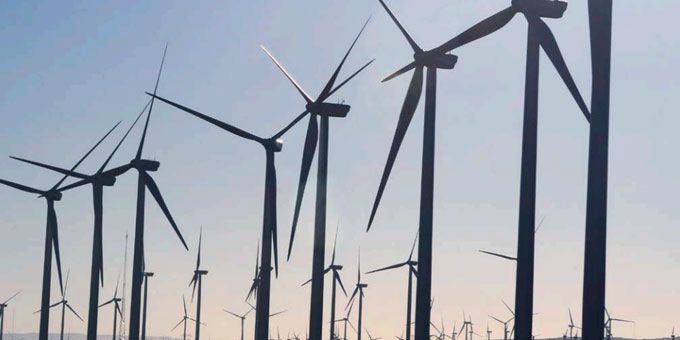With the push for longer blades, carbon fibre is used as its lighter weight compared to fibreglass, allowing longer blades to capture more wind energy.
 Composite Solutions for the Wind Energy Industry
Composite Solutions for the Wind Energy Industry

Dag Kirschke | Exel Composites
As the world tries to limit the use of fossil fuel energy, the demand for renewable energy is increasing, with wind becoming a heavily relied on resource. In 2018, Europe’s wind energy investments accounted for 63 per cent of renewable energy, compared to just 52 per cent in 2017. To meet the growing demand for wind energy, manufacturers are increasing turbine output and, as a result, adapting their blade designs.
Here, Dag Kirschke, Wind Energy Segment Owner for composite manufacturer Exel Composites, explains the demand for wind energy and why composite materials are the answer to producing powerful and efficient turbines.
Wind in demand
The demand for wind energy is increasing. It’s clean, cost effective and sustainable. As environmental and climate change concerns are influencing a greater need for renewable and sustainable energy, wind turbines are a substantial part of the solution –with over 340,000 wind turbines in the world already used to produce energy. For example, China is responsible for over a third of the world’s wind energy capacity and in 2015, installed more wind turbines than the EU, whereas Scotland generated enough electricity from wind in 2018 to power the equivalent of five million homes. Industry experts believe that if the demand for wind energy continues, one third of the world's electricity needs will be fulfilled by wind power by 2050.
Today, manufacturers are facing continued pressure to produce higher returns on turbines, with improved cost efficiency and increased power output that can generate more energy. To achieve this, manufacturers are creating turbines with longer blades that capture more wind, in turn generating more energy. However, a longer blade means increased weight, which works against efficient power production. In order to maintain a powerful and efficient turbine with longer blades, manufacturers require materials that are lightweight and stronger than traditionally used materials.
A composite solution
A large part of a turbine blade’s strength comes from a support beam, or spar cap, which runs the length of the blade. Traditionally, spar caps have been made out of fibreglass, which provides the needed strength and stiffness, with less weight than other materials like metals. Yet, with the push for longer blades, carbon fibre is used as its lighter weight compared to fibreglass, allowing longer blades to capture more wind energy. Typically, each blade manufacturer will determine in their design the point at which carbon becomes the optimal solution, and the spar cap is designed accordingly.
Exel Composites works closely with turbine and blade manufacturers to engineer, manufacture and deliver composite solutions for blades, including fiberglass and carbon fibre spar caps, as well as many other composite solutions used in wind turbines. We use our experience of design, combined with manufacturing technology allows us to help turbine manufacturers produce more efficient turbines by reviewing design specifications and proposing an appropriate solution.
To keep up with the growing demand for wind energy, manufacturers need to invest in long-lasting, high-performance composites, that contribute efficiencies to help ensure the maximum amount of energy is produced. Using a composite manufacturer like Exel means that design specifications will be thoroughly reviewed and met in order to achieve a powerful and efficient turbine.
The content & opinions in this article are the author’s and do not necessarily represent the views of AltEnergyMag
Comments (0)
This post does not have any comments. Be the first to leave a comment below.
Featured Product

